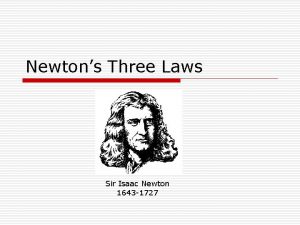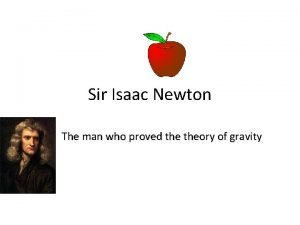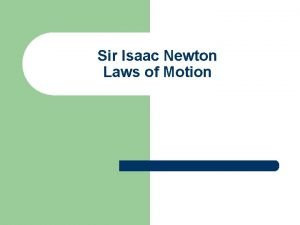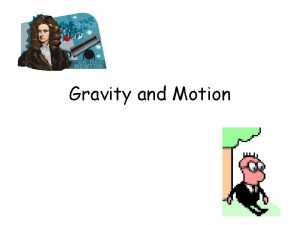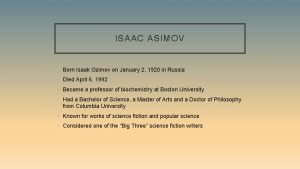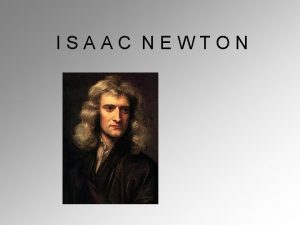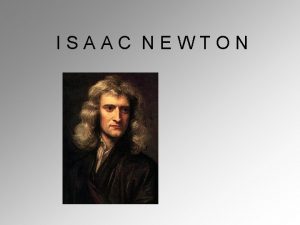SIR ISAAC NEWTON AND THE LAW OF INERTIA










- Slides: 10

SIR ISAAC NEWTON AND THE LAW OF INERTIA

SIR ISAAC NEWTON: THE EARLY YEARS � Born December 25, 1642 in Woolsthorpe, Lincolnshire, England � His father died before his birth; his mother remarried and he was sent to live with his grandmother � June 1661 - he entered Trinity College, Cambridge

THE SCIENTIFIC REVOLUTION � Newton studied Descartes and Aristotle � He developed calculus and became the leading mathematician in Europe � Graduated in 1665 but was forced to work at home due to the plague

AFTER THE PLAGUE � In 1667, he accepted a fellowship at Trinity College � He began working on optics and light � Began working on his masterpiece paper

NEWTONIAN LAWS OF MOTION AND UNIVERSAL GRAVITATION published Philosophiae Naturalis Principia Mathematica � 1686 - � contained his three laws of motion and the law of universal gravitation

LATER YEARS � 1703 - elected to the presidency of the Royal Society of London � 1705 - knighted by Queen Anne � During his final years, he lived with his niece and her husband in London � He died March 20, 1727 and is buried in Westminster Abbey

INERTIA � Tendency of an object to maintain its state of motion (amount of inertia depends on the object’s mass) � An object with a lot of inertia takes a lot of force to start or stop; an object with a small amount of inertia requires a small amount of force to start or stop.

LAW OF INERTIA � An object in motion will stay in motion and an object at rest will stay at rest, unless acted upon by an outside force � ‘An object will tend to resist changes in motion’


CAN YOU THINK OF A REAL-WORLD EXAMPLE OF THE LAW OF INERTIA? ?


